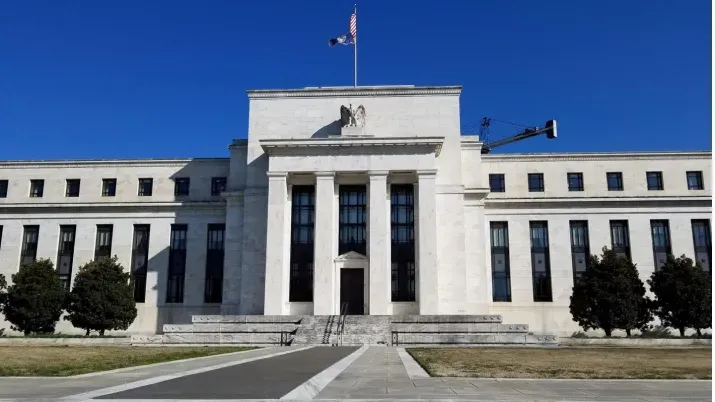The cutting cycle begins
Uncertainty is over, it was a 50 basis point (bp) move. As we mentioned yesterday, the most important takeaway from this Federal Reserve (Fed) meeting would be its assessment of the economy. The objective of loosening monetary policy could have been achieved with a 25bp cut and a very dovish message, or with a 50bp cut while highlighting the strength of the economy and removing any doubt about it being a panic move. The Fed chose the second option.
Fed chair Jerome Powell stressed that 50bp moves should not be seen as a new normal, that this was a pre-emptive cut and a signal of the central bank’s “commitment to not fall behind the curve". From a fixed income portfolio point of view, we see five key implications of the Fed’s move, the press conference and the new Summary of Economic Projections (SEP).
First, the economy is in good shape. In the Fed’s view, growth will decelerate from here towards the 2% mark, a level consistent with the potential growth of the US. Growth forecasts for 2024 were revised down marginally, whereas from 2025 onwards there were no changes. The median dot plot is for 50bp more cuts in 2024 and quarterly 25bp moves thereafter. This would be a somewhat unhurried cutting cycle compared to history, which is in line with the Fed’s assessment that the economy is doing well and will continue to do so, albeit growing at a slower pace than in previous quarters.
Second, there is a “Fed put” and it is happy to use it. Investors can be reassured that if the economy deteriorates more than the Fed expects, then policy response will be stronger and without hesitation. In trading-speak, this means buy the dip. There is ample room for the Fed to cut rates as they are still in deeply restrictive territory even after yesterday’s actions. Given markets know what will happen should things deteriorate from here (and they have solid proof after yesterday’s meeting), then the scope for a sell-off in risk assets should be smaller than previously.
Third, intermediate and long-dated US Treasuries do not have a lot of scope to continue rallying if the Fed’s base case materialises. Under that base case, monetary policy rates will bottom out close to 3% with the economy growing at its potential rate by 2026. Taking the 10-year US Treasury as an example, at 3.70% the slope to the Fed Funds rate would be 70bp (with all else being equal) by then, which is already lower than long-term averages. Government bonds will certainly act as protection in episodes of volatility, but it is important to keep in mind that from a medium-term point of view, the Fed’s base case implies that 10-year US Treasury yields should not really be lower than they currently are. Just to be clear, we do not think government bonds are to be sold here necessarily. They provide liquidity and protection in case the base scenario turns unpleasant for whatever reason and come with a real yield that looks very decent if one thinks inflation is actually falling to the 2% target in the future.
Fourth, putting the two previous points together, our conclusion is that credit will continue to outperform government bonds. There were good reasons in our view as to why spreads should be below their long-term averages before the meeting. Now that we have more certainty about the Fed’s put, our conviction around this statement is higher. Volatility will rear its head from time to time, but as mentioned earlier we believe dips are likely to be shallow. Having said that, given spreads are below their long-term averages, we do not think the right strategy is to go on a yield hunting trip to CCC land or to bet on large capital gains due to spreads compressing significantly from here. Carry is likely to be the name of the game.
Finally, conditions could not be more optimal for monies invested in short-term T-bills or money market funds to move into other assets classes. The Fed’s hefty rate cut was right at the top in the damage scale for those who have continuously rolled short-dated deposits into new ones over the last couple of years. These sorts of monetary policy moves are more often than not enacted as a consequence of a significant deterioration in the economic outlook. Under those circumstances, investors might be willing to swallow the new lower yields in their cash balances for the sake of safety. This time around though, the cut was pre-emptive. There is no sign in the Fed’s base case of a recession around the corner. In consequence, we have a combination of a significant reduction in future returns of a rolling T-bills strategy, while riskier assets don’t appear at huge risk of a significant sell-off for the time being.
One word of caution though. All the aforementioned rests on two main assumptions. The first one is that inflation remains under control. Powell sounded very confident that this is the case, but no doubt he and the rest of his committee will not take their eyes off the inflation ball. The second one is that further deterioration in the labour market doesn’t get out of hand. The labour market is not the quickest one to respond to monetary policy action and there is evidence that trends, once they take hold, are difficult to stop. The Fed put should help a long way in easing financial conditions if this is the case, but investors should keep in mind that the Fed has direct control over certain variables such as the monetary base, while others such as the unemployment rate it can only influence indirectly. In our view, at this stage, it is reasonable to assume that both inflation and unemployment will in fact remain under control, but we stand ready to change our views if they don’t, as does the Fed.




